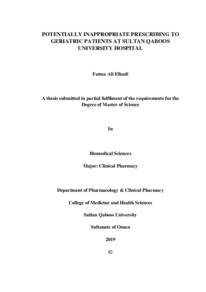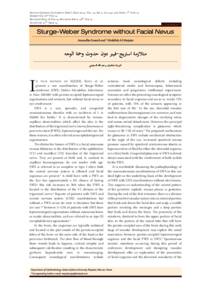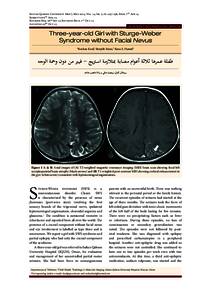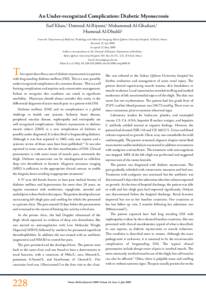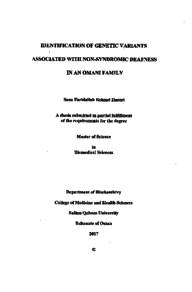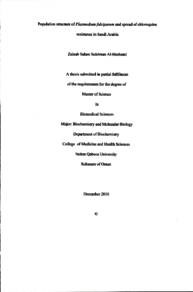Document
Potentially inappropriate prescribing to geriatric patients at Sultan Qaboos University hospital
Publisher
Sultan Qaboos University
Gregorian
2019
Language
English
English abstract
Background: Aging is an inevitable process that is accompanied by various physiological, pharmacokinetic and pharmacodynamic changes. Geriatric individuals are often prone to multiple chronic conditions and hence require more medications to manage those conditions. Potentially inappropriate prescribing (PIP) encompasses the prescribing of potentially inappropriate medications (PIMs) where their potential risks significantly outweigh their potential benefits and potentially prescribing omissions (PPOs) where potentially beneficial medications that are clinically indicated for treating or preventing a disease are omitted. PIP is highly prevalent in the geriatric population and is considered a major healthcare concern. PIP is associated with various serious outcomes such as an increased risk of adverse drug events (ADEs), hospitalization, mortality, healthcare utilization and costs. Aim: To identify and assess potentially inappropriate medications (PIMs) and potentially prescribing omissions (PPOs) in the discharge prescriptions of patients aged 65 years and older at Sultan Qaboos University Hospital (SQUH) by applying the updated version of the Screening Tool of Older Person's Prescriptions/ Screening Tool to Alert Doctors to Right Treatment (STOPP/START) criteria.
Objectives:
• To estimate the prevalence of potentially inappropriate medications and potentially prescribing omissions among the geriatric patients.
• To Identify specific risk factors for potentially inappropriate medications and potentially prescribing omissions.
Methods: Design: a retrospective observational study of patients discharged between January 1st, 2017 and December 31st, 2017.
Participants: Patients aged ≥65 years of both genders discharged from different Internal Medicine Department Units.
Assessment tool: Discharge prescriptions were reviewed for PIMs and PPOs by applying the updated version of the STOPP/START criteria.
Results: Among the 331 patients included, there were more males than females (57.1% vs 42.9%) and 90% of the patients presented with multimorbidity. The median number of prescribed medications at discharge was 7. Polypharmacy was identified in 79.2% of the patients and hyperpolypharmacy in 16.6% of the patients. PIMs were observed in 44.7% of the patients. There were 94 inappropriately prescribed proton pump inhibitors, 27 prescribed medications without an evidence based clinical
indication and 13 PIMs that predictably increase the risk of falls in older people. PPOs were identified in 42% of the patients. There were 91 omissions of cardiovascular medications, 53 omissions of vitamin D supplements and 33 omissions of
antihypertensives in diabetic patients with renal disease. Age was a significant risk factor for PIMs (Adjusted OR [95% CI]: 1.05 [1.016-1.084]; p=0.003) and PPOs (Adjusted OR [95% CI]: 1.048 [1.016-1.081]; p=0.003). However, Multimorbidity and
gender were not risk factors for either PIMs or PPOs. Patients with polypharmacy were 3 times more likely to receive PIMs (Adjusted OR [95% CI]: 3.223 [1.648-6.303]; p= 0.001). COPD was found to be a protective factor against PIMs and chronic kidney
disease was identified a significant risk factor for PPOs (Adjusted OR [95% CI]: 1.933 [1.175-3.179]; p=0.009). Dementia was identified as a significant risk factor for both PIMs (Adjusted OR [95% CI]: 2.657 [1.008-7.006]; p=0.048) and PPOs (Adjusted
OR [95% CI]: 2.915 [1.17-7.26]; p=0.022).
Conclusion: The rate of PIMs (44.7%) and PPOs (42%) that was identified during discharge in our study is within the range of rates observed in other studies in the same setting. Age, dementia, polypharmacy and hyperpolypharmacy were significant risk
factors for PIMs, while COPD was a protective factor against receiving PIMs. Age, dementia and chronic kidney disease were identified as significant risk factors for PPOs. The most commonly prescribed PIMs were long-term use of proton pump
inhibitors, medications without an evidence-based clinical indication and drugs that predictably increase the risk of falls. The most commonly omitted medications were cardiovascular medications, vitamin D and antihypertensives in diabetic patients with renal disease. By combining multiple strategies for the optimization of prescribing, PIP can be minimized in the geriatric population.
Member of
Resource URL
Arabic abstract
الخلفية: الشيخوخة هي عملية حتمية مصحوبة بتغييرات فيزيولوجية وكيميائية حركية وديناميكية مختلفة غالية ما يكون الأفراد المسنون عرضة لظروفه مزمنة متعددة و من ثم يحتاجون إلى المزيد من الأدوية الإدارة هذه الحالات. تتضمن الوصفات التي قد تكون غير مناسبة وصف الأدوية التي يحتمل أن تكون غير مناسبة حيت تكون مخاطرها المحتملة أكبر بكثير من مقاقعها المحتملة ويحتمل أن تفسر حالات الإغفال التي يتم فيها حذف الأدوية المفيدة التي يشار إليها سريريا لعلاج أو منع مرض ما. ينتشر وصف الأدوية التي يحتمل أن تكون غير مناسبة بشكل كبير عند المسنين ، ويعتبر من أهم مخاوف الرعاية الصحية و يرتبط بمختلف النتائج الخطيرة
Category
Theses and Dissertations

